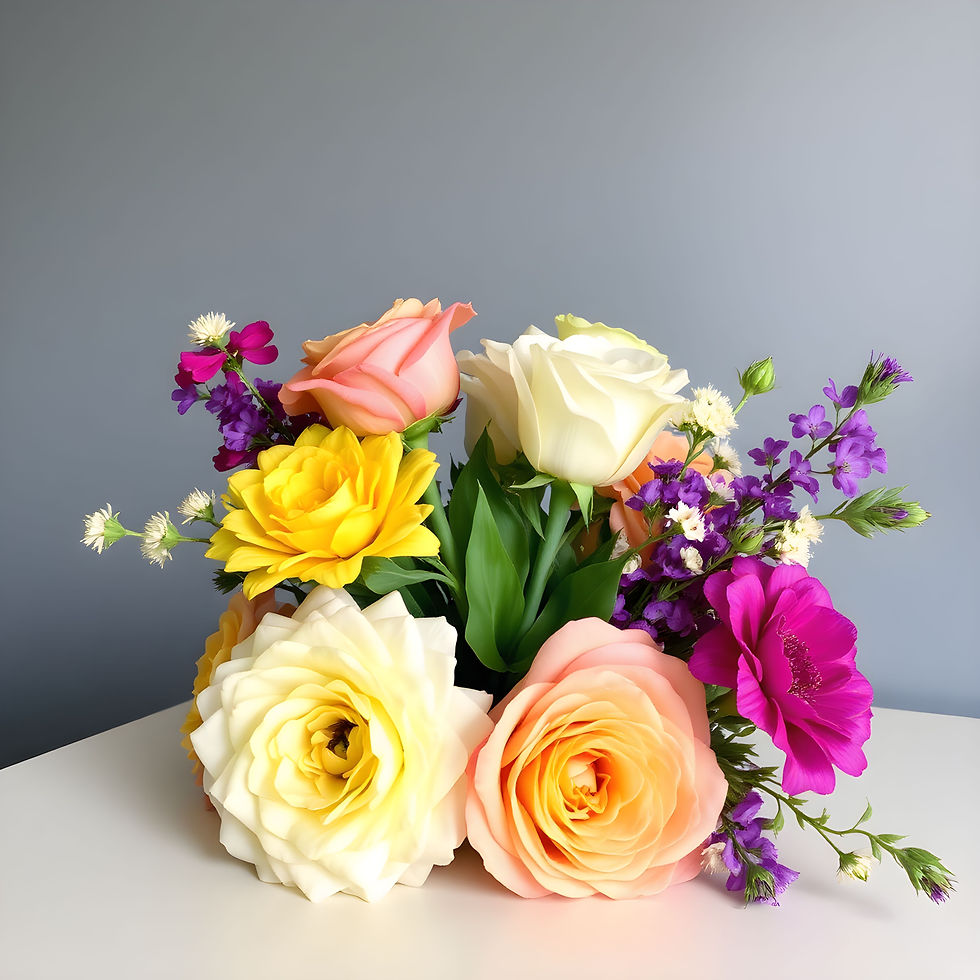The Science Behind How Flowers Get Their Colors
- Andrej Apostolov
- Jul 15, 2024
- 2 min read
Have you ever wondered about the kaleidoscope of colors that adorn the petals of your favorite flowers? From the vibrant red of a rose to the delicate blue of a forget-me-not, each hue tells a unique story of nature's artistry. Here’s a glimpse into the fascinating science of floral colors:
Nature's Chemistry: Creating Colorful Pigments
Flowers derive their hues from specialized pigments, each with its own chemical structure and light-absorbing properties. Anthocyanins, for instance, produce shades of red, purple, and blue, while carotenoids contribute to yellows and oranges. These pigments are synthesized within the flower's cells through complex biochemical pathways, influenced by factors like pH levels and environmental conditions.
Genetic Blueprints: Genetic Basis of Flower Color
Believe it or not, flower color is genetically determined. Genes encode the enzymes that control pigment production, dictating whether a flower will be scarlet or lavender. Genetic mutations can even lead to novel color variations, showcasing nature's penchant for diversity and adaptation.

Environmental Influences: Nature's Brushstrokes
Beyond genetics, external factors like soil composition, sunlight exposure, and climate can influence flower color. A sun-drenched bloom may boast more intense pigmentation, while cooler temperatures might produce softer pastel shades. This interplay between genetics and environment adds layers of complexity to each blossom's chromatic display.
Evolutionary Masterpieces: Attracting Pollinators
Flower colors aren't just for show—they play a crucial role in attracting pollinators like bees, butterflies, and birds. Evolution has honed these colors to be eye-catching to specific pollinators, ensuring the flower's reproductive success. This mutualistic relationship between flora and fauna underscores the beauty and functional elegance of floral colors.
Cultural Symbolism: Colors in Art and Society
Across cultures, flowers and their colors carry symbolic meanings. Red roses evoke love and passion, while white lilies symbolize purity and rebirth. These cultural associations have deep roots in history and continue to influence our perceptions and traditions surrounding flowers.
Conclusion: Nature's Kaleidoscope
Next time you admire a bouquet or stroll through a garden, take a moment to appreciate the intricate chemistry, genetics, and environmental dynamics that collaborate to create nature's living canvases. Each flower's color palette is a testament to the wonders of adaptation, evolution, and the enduring beauty of the natural world.




Comments